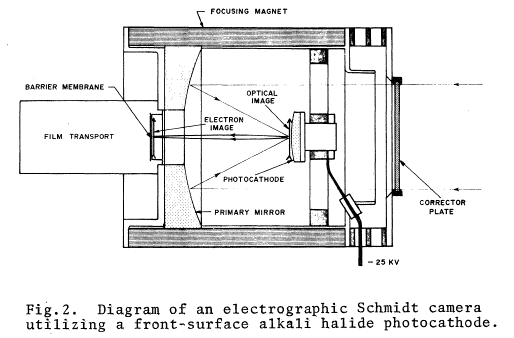Similarly to night vision devices, the light sensitive part is the photocathode, which releases electrons when hit by photons. The electrons are then focused onto a film surface using the magnetic field.
Citing the article:
[...] we have been developing a series of magnetically focused electrographic cameras utilizing front-surface alkali-halide photocathode [...] In these devices, the photocathode is mounted at the focus of an optical system which is partially contained within the imaging device.
So, apparently, the secondary mirror does not actually work as a mirror (the optical path ends here) and its shape only corrects the field curvature.
